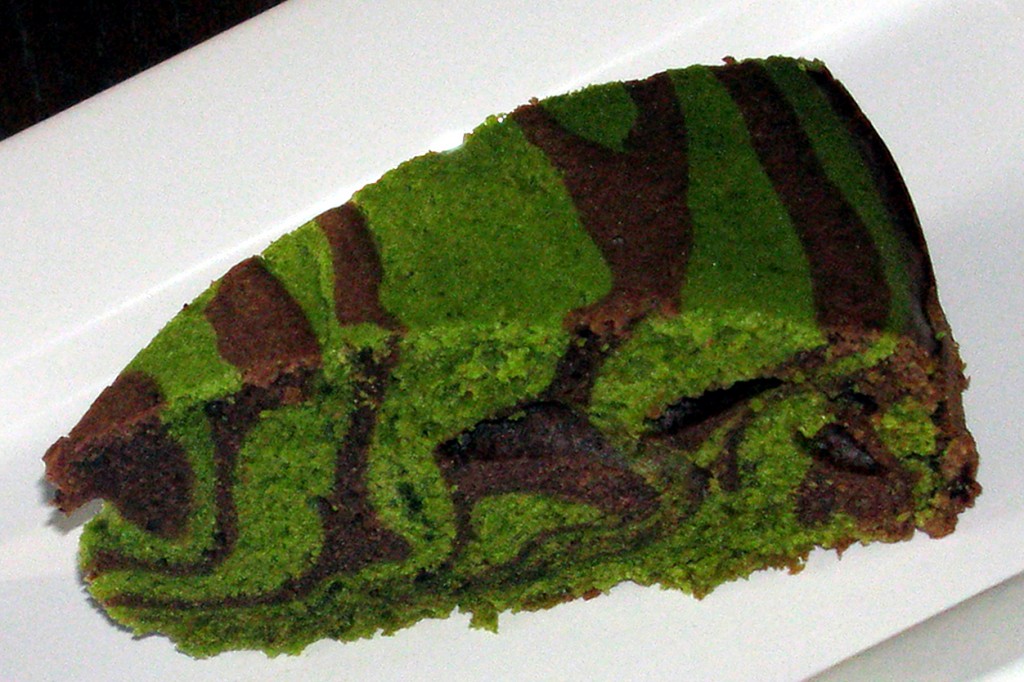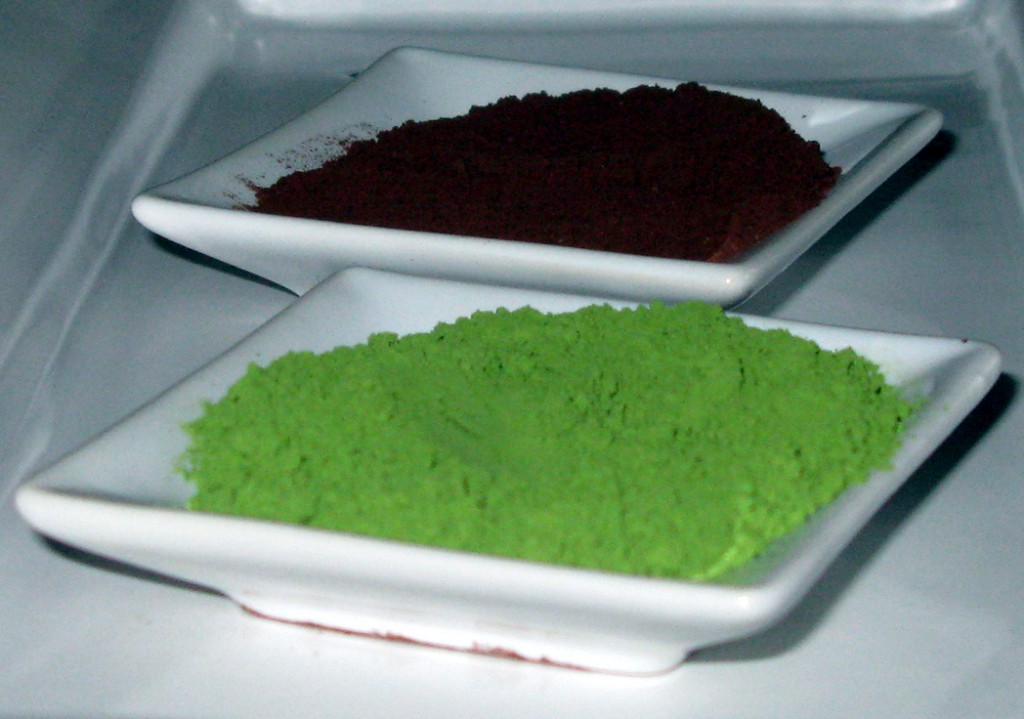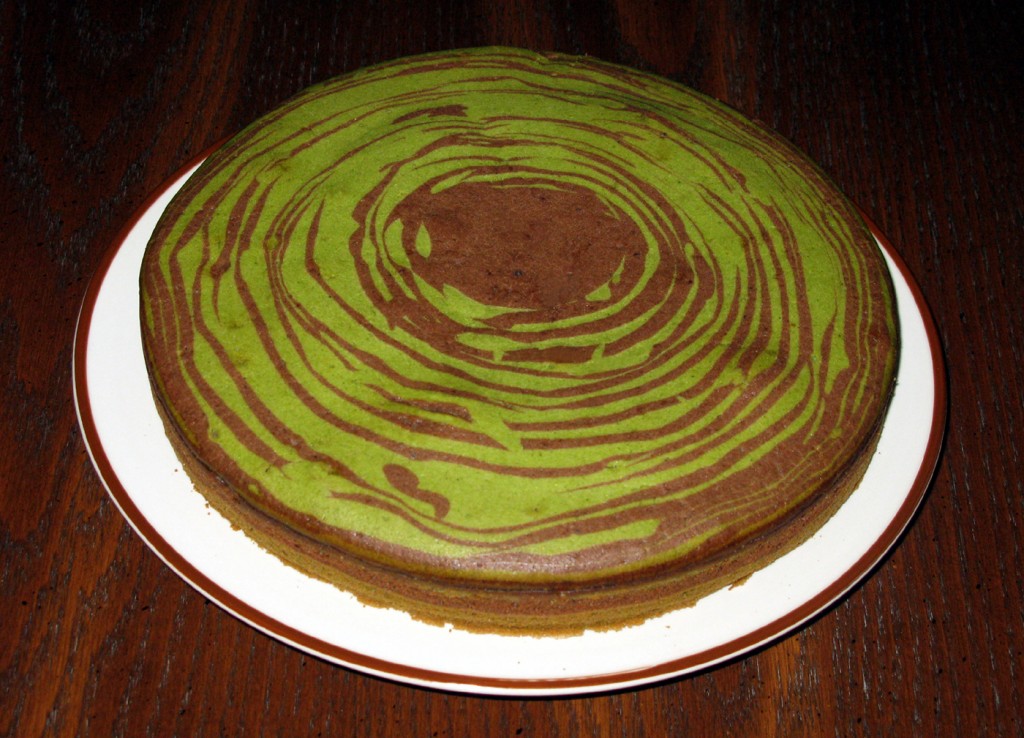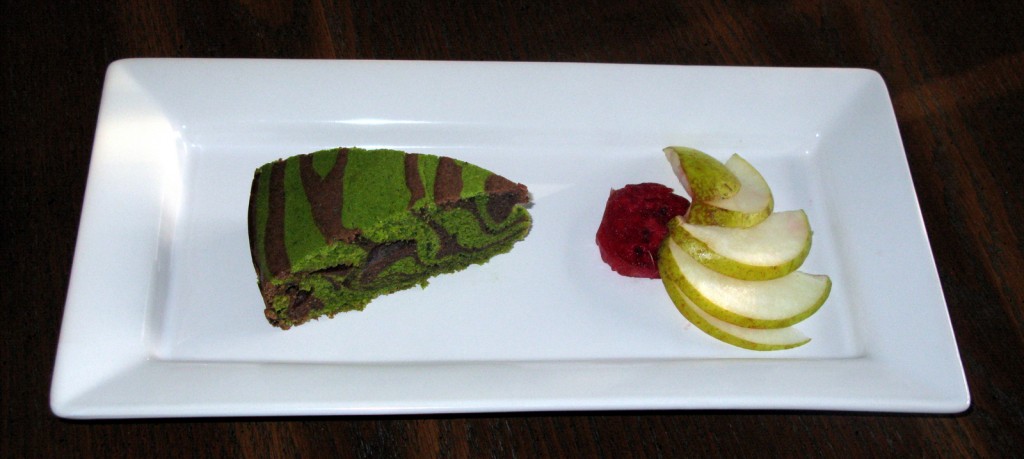
Asian fusion cake
Food has always played an integral and important part in traditional holiday ethnic festivities, and the Asian cultural tradition is no exception. Of Chinese descent, I was born and raised in Montreal, and I grew up discovering and learning to understand and appreciate the various Eastern and Western cultural practices which interact actively within a vibrant multicultural milieu.
In an era of globalization, it has become fashionable for a large number of ethnic Asian groups, here and abroad, to celebrate the New Year twice, literally. Many ethnic Asian groups, including the Chinese, Vietnamese, Thai, Korean, Malaysian, Singaporean, Indonesian, Filipino, and Tibetan, recognize the lunar calendar as an inseparable part of their culture and tradition and regard the Lunar New Year (also referred to as Chinese New Year or Spring Festival among Chinese communities around the world) as the most important and longest holiday in the Asian lunisolar calendar. In 2010, the Chinese Lunar Year of 4708 falls coincidentally on February 14th, St. Valentine’s Day (and incidentally the second day of the Vancouver 2010 Winter Olympic Games competition), a rare occurrence, making the conflation of celebrations unusually and auspiciously sweet and special.
As we approach the Chinese New Year, my mother, each year, would cook up a storm in the kitchen, busily preparing from scratch a wide variety of traditional Chinese Lunar Year specialties, many of which carry symbolic meaning and represent a homonymic play on the Chinese words of fortune, happiness, abundance, longevity, and prosperity; from the classic and popular vegetarian dish “Buddha’s Delight,” also known as lo hon jai in Cantonese or luó hàn cài in Mandarin (羅漢齋), to the savoury and aromatic glutinous rice dish lor mei fan (Cantonese) or nuò mǐ fàn in Mandarin (糯米飯), which is studded generously with dried shrimp, finely chopped scallions, and finely diced Chinese sausages, shiitake mushrooms, and dried squid; from the firm and translucent water chestnut cake ma tai go (Cantonese) or mă tí gāo in Mandarin (馬蹄糕) to the hearty and toothsome tong yun (Cantonese) or tāng yuán in Mandarin (湯圓), glutinous rice balls filled with, in my mother’s version, raw brown cane sugar or ground black sesame seeds which are served in a sweet ginger-infused broth.
And every year, she would always make her favourite, the customary and quintessential Chinese New Year steamed sweet rice cake nean go (Cantonese) or, in Mandarin, nián gāo (年糕), preparing it either plain or with Adzuki red beans, whatever would suit her fancy that year. Although I welcome wholeheartedly good fortune, wealth, affluence, and eminence, I have never been very fond of this extremely chewy and gooey specialty which has traditionally been believed, when consumed, to bring an increase in status and prosperity every year, but each year, I would eat one or two thin slices of this dense, dough-like dish, pan-fried, to make my mother happy. And each year, my mother, the only one in the family who thoroughly enjoys and craves this sweet and sticky Chinese New Year staple, would always end up consuming the remaining large, untouched portion of this pastry. However, by the third day after her sweet sticky rice creation, she would no longer desire more slices as she would already have eaten quite a fair bit of the cake which would have assuaged her hankering, and she would then get bored of it.
This year, she decided, to my pleasant surprise, not to reproduce this steamed specialty. In a culinary mood to explore and create something beautiful and ambrosial, I set out to prepare a very different kind of sweet delicacy to celebrate the Chinese New Year and St. Valentine’s Day simultaneously.
I found my sweet inspiration from the breathtaking zebra cake, a type of chocolate and vanilla marble cake which is quite popular in Eastern Europe, particularly in Russia, Ukraine, Turkey, and Azerbaijan. Although I have never baked this dessert dish before, I was intrigued with this pastry treat and its striking and vivid stripes of alternating bands of chocolate and vanilla. I found it visually fitting to ring in the Year of the Metal (or Golden) Tiger, a year where “hot passion meets cold steel.”

Matcha green tea and cocoa powder
As my circle of very close friends already knows, I have always been passionate about, and enamoured of, chocolate. And more recently I became even more fascinated with the cross-cultural dessert pairing of this ubiquitous and luscious “food of the gods” and the alluring and fragrant matcha green tea.
During the past Christmas season, I experimented with both of these elusively complex ingredients and crafted by hand matcha dark chocolate truffles which I shared with a few of my privileged friends who, like me, savoured the silkily sensuous culinary confections. From this indulgent gastronomic experience, I became instantaneously enchanted with the beautiful marriage of these two umami luxury foods, and my love affair with this harmonious coupling continues.

Matcha and chocolate zebra cake
As an imaginative twist to the zebra-print-inspired pastry, I incorporated the prized Japanese green tea powder into the chocolate marble cake to lend an Asian tone to the Eastern European dish. The East-meet-West, or rather, West-meets-East, experimented concoction, which spotlights the bittersweet combination of the yin and yang, turned out, from my very first attempt, to be a sinfully seductive cake, even with its imperfect, untamed concentric circle design displayed on top. Dressed without any form of frosting, icing, or decoration, the soft cake, revealing a playful and lively contrast between the luxurious dark chocolate and fine matcha green tea, delights the eye and the palate and suggests the regal and dynamic traits of the Chinese zodiac sign of the tiger. When cut, the dessert, with its expressive, animal-like transverse stripe formation on the sides of the sliced wedges, was light and moist in texture and well-balanced in flavour and taste, the delicate bitterness of the matcha tea counteracting the semi-sweet force of the dark chocolate. Like the nean go, the Asian fusion cake, also round in shape and sweet to the palate, embodies the symbol of completeness, happiness, togetherness, and, of course, sweetness in life.

Slice of matcha and chocolate zebra cake with pear and cactus pear slices
From the moment I had baked the delectable pastry, I ate, and I kid you not, five-twelfths of it that day. Simply irresistible, the dessert was so deliriously delicious that after one slice, you had to keep returning for more. The entire delicacy disappeared extremely quickly, and only a scattering of cake crumbs on the serving plate was left behind.
A wealth of long-established and time-honoured food traditions are deeply ingrained in the Chinese culture, but this year, the custom of consuming nean go during the Chinese Spring Festival has been defied. What a sweet and refreshing change it was, indeed, to break from the Chinese New Year tradition of preparing, serving, and feasting on, dishes which have been based on how the dishes sound and not necessarily on how they actually taste on the palate. In style, I celebrated the special and festive occasion with cake, confidence, and courage, embracing enthusiastically the Year of the Tiger which has traditionally been associated with challenging and potentially turbulent changes, and this particular year appears to be no exception. And I rejoice that a non-traditional dessert such as this chocolate and matcha zebra cake can bring so much sweet and abundant pleasure. I’m ready for a roaring year, and I can make my cake and eat it too.
And on this jubilant note, I would like to wish all of you who celebrate the Lunar New Year a very happy and prosperous New Year. Gung hei fat choy! Sun nean fai lok! Gōng xǐ fā cái! Xīn nián kuài lè! 恭喜發財! 新年快樂!
